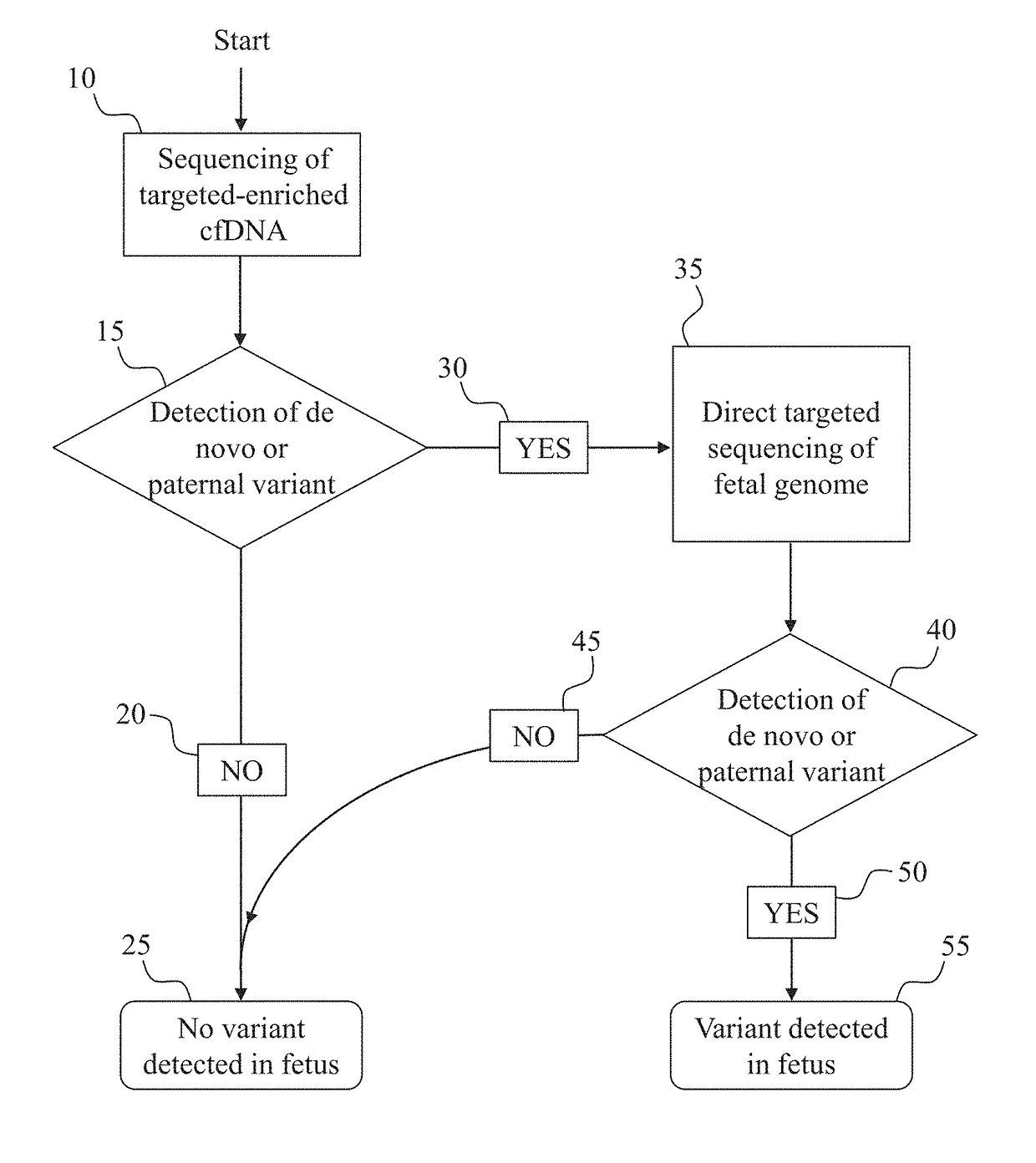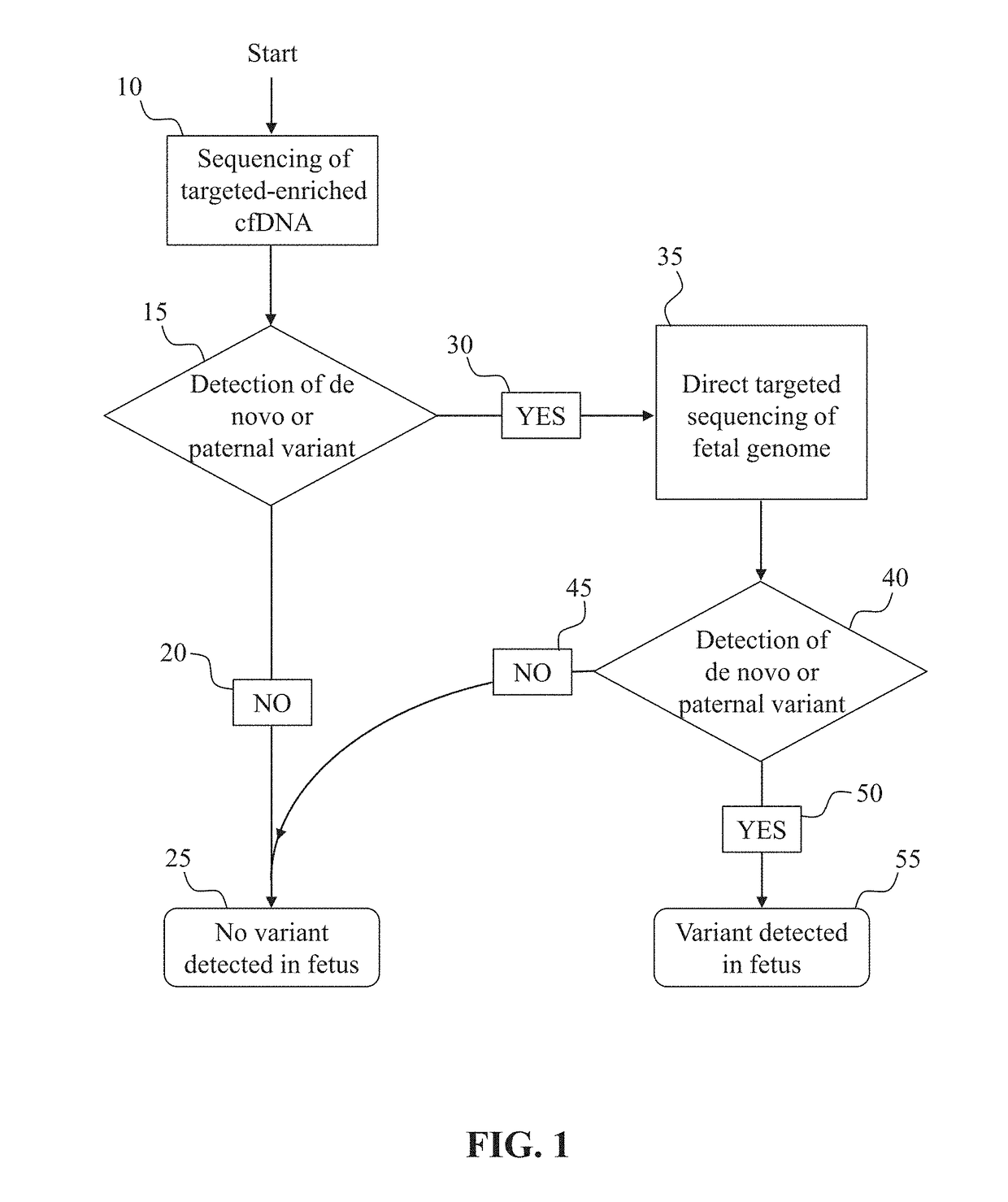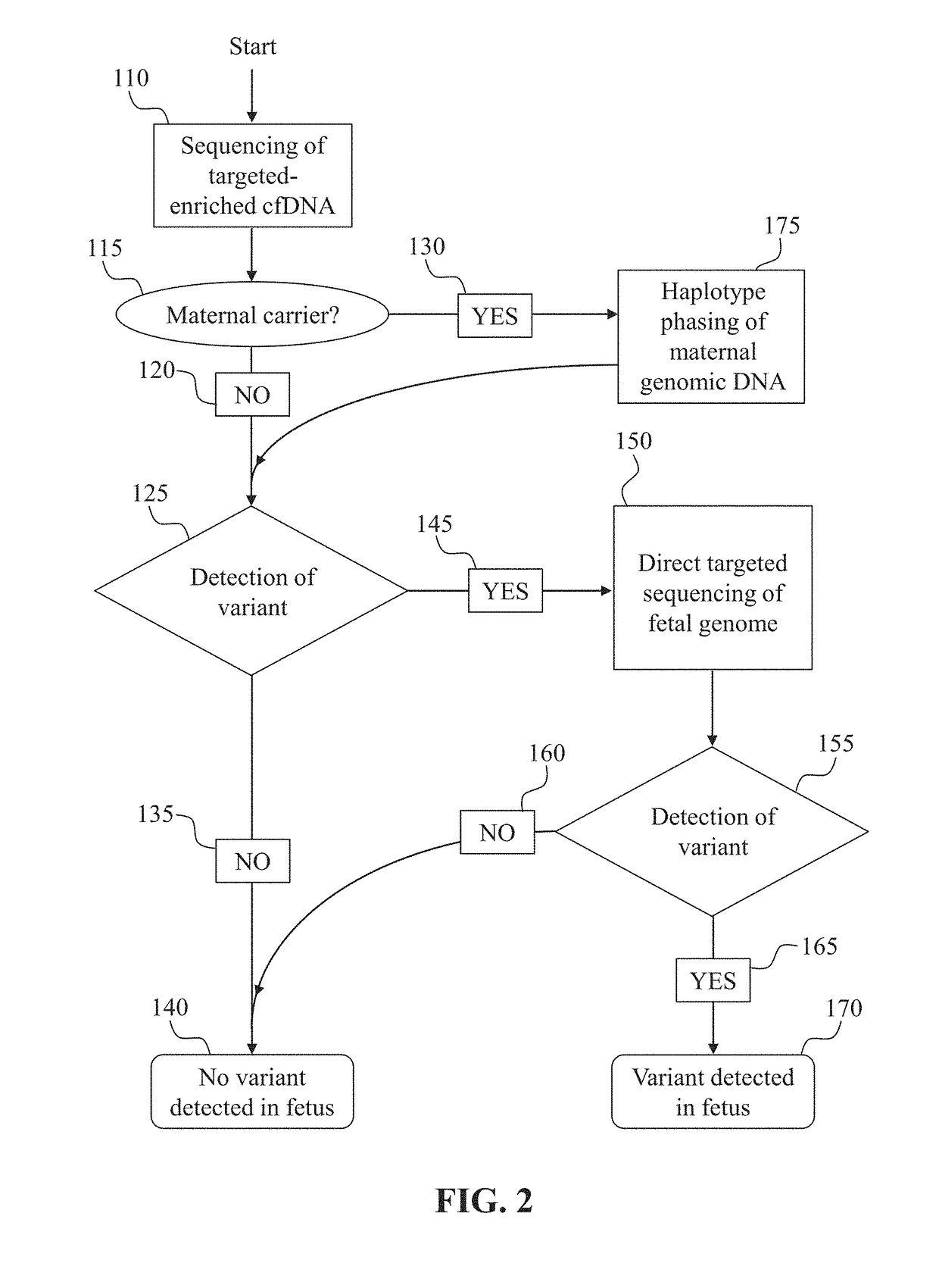Noninvasive prenatal diagnostic methods
a prenatal diagnostic and non-invasive technology, applied in the field of methods of detecting genetic variants in a fetus, can solve the problems of posing significant risks to the fetus, unable to provide resolution with sufficient accuracy for adequate fetal genetic variant determination, and incomplete whole genome sequencing of a cfdna sampl
- Summary
- Abstract
- Description
- Claims
- Application Information
AI Technical Summary
Benefits of technology
Problems solved by technology
Method used
Image
Examples
example 1
NP Detection Assay Development
[0122]This example demonstrates the development of an assay for the detection of de novo (non-inherited) SNPs in the fetus, and can be used, for example, to determine DNA library concentrations for any particular region of interest.
[0123]To established the sensitivity of a de novo detection assay, a dilution series of cell-line-derived or plasma-derived DNA, with at least one known mutation, in a background of plasma-derived DNA not carrying that mutation is prepared. A DNA library, with incorporated molecular barcodes is prepared from each sample of the dilution series. Subsequently, the DNA library samples are enriched for a region of interest surrounding the known mutation. Optionally, targeting enrichment can be accomplished during the step of creating a DNA library if a PCR-based target enrichment protocol is used to prepare the DNA library. Next, the enriched library samples are sequenced at a depth predicted to be sufficient to detect the variant...
example 2
y Inherited and De Novo SNP Detection
[0124]This example demonstrates the detection of paternally inherited and de novo SNPs in the fetus from cell-free DNA obtained from the mother. Paternally inherited SNPs are indistinguishable in the plasma from de novo SNPs, as neither will appear in the background maternal DNA, without further analysis (such as paternal genome sequencing or paternal haplotype construction)
[0125]One or more samples of cell-free DNA are obtained from the blood plasma of a pregnant woman. A DNA library is prepared from the cell-free DNA sample. Optionally, based on the sensitivity of the assay, as determined by, for example, the method discussed in Example 1, molecular barcodes may be incorporated if judged necessary for assay performance at desired fetal fractions. Next, the sample is enriched for a region of interest which is expected to contain one or more loci at which the father carries a different SNP allele than the mother. The enriched libraries are then s...
example 3
eletion Detection Assay Development
[0127]This example demonstrates the development of an assay for the detection of de novo deletion in the fetus, and can be used, for example to determine DNA library concentrations for any particular region of interest.
[0128]To establish the sensitivity of a de novo deletion detection assay, a dilution series of a cell-line or plasma sample known to be positive for a heterozygous or hemizygous copy number loss variant is prepared. A DNA library, with incorporated molecular barcodes is prepared from each sample of the dilution series. Subsequently, the DNA library samples are enriched for a region of interest surrounding the known mutation. Optionally, targeting enrichment can be accomplished during the step of creating a DNA library if a PCR-based target enrichment protocol is used to prepare the DNA library. Next, the enriched library samples are sequenced at a depth predicted to be sufficient to detect the copy number variation of interest at eac...
PUM
| Property | Measurement | Unit |
|---|---|---|
| allele frequency | aaaaa | aaaaa |
| maternal allele frequency | aaaaa | aaaaa |
| frequency | aaaaa | aaaaa |
Abstract
Description
Claims
Application Information
 Login to View More
Login to View More - R&D
- Intellectual Property
- Life Sciences
- Materials
- Tech Scout
- Unparalleled Data Quality
- Higher Quality Content
- 60% Fewer Hallucinations
Browse by: Latest US Patents, China's latest patents, Technical Efficacy Thesaurus, Application Domain, Technology Topic, Popular Technical Reports.
© 2025 PatSnap. All rights reserved.Legal|Privacy policy|Modern Slavery Act Transparency Statement|Sitemap|About US| Contact US: help@patsnap.com



